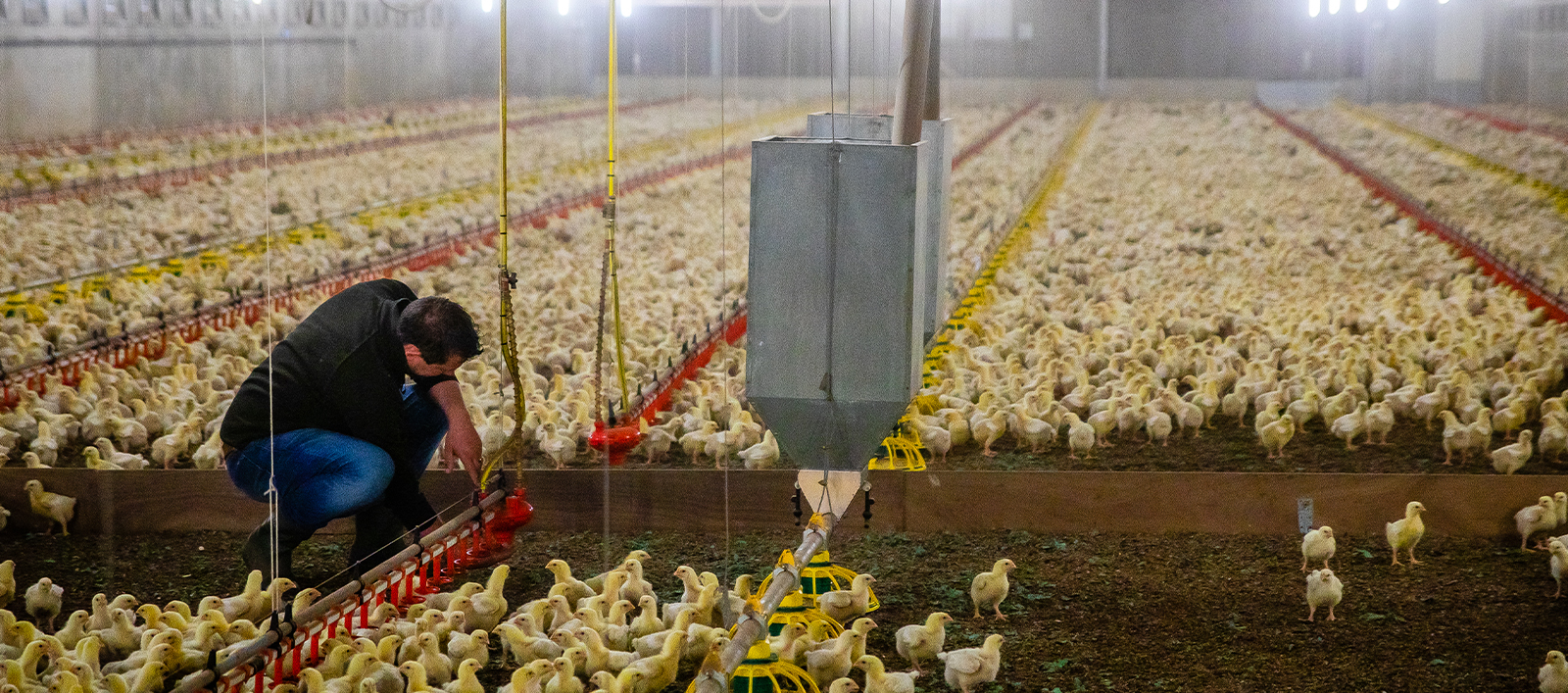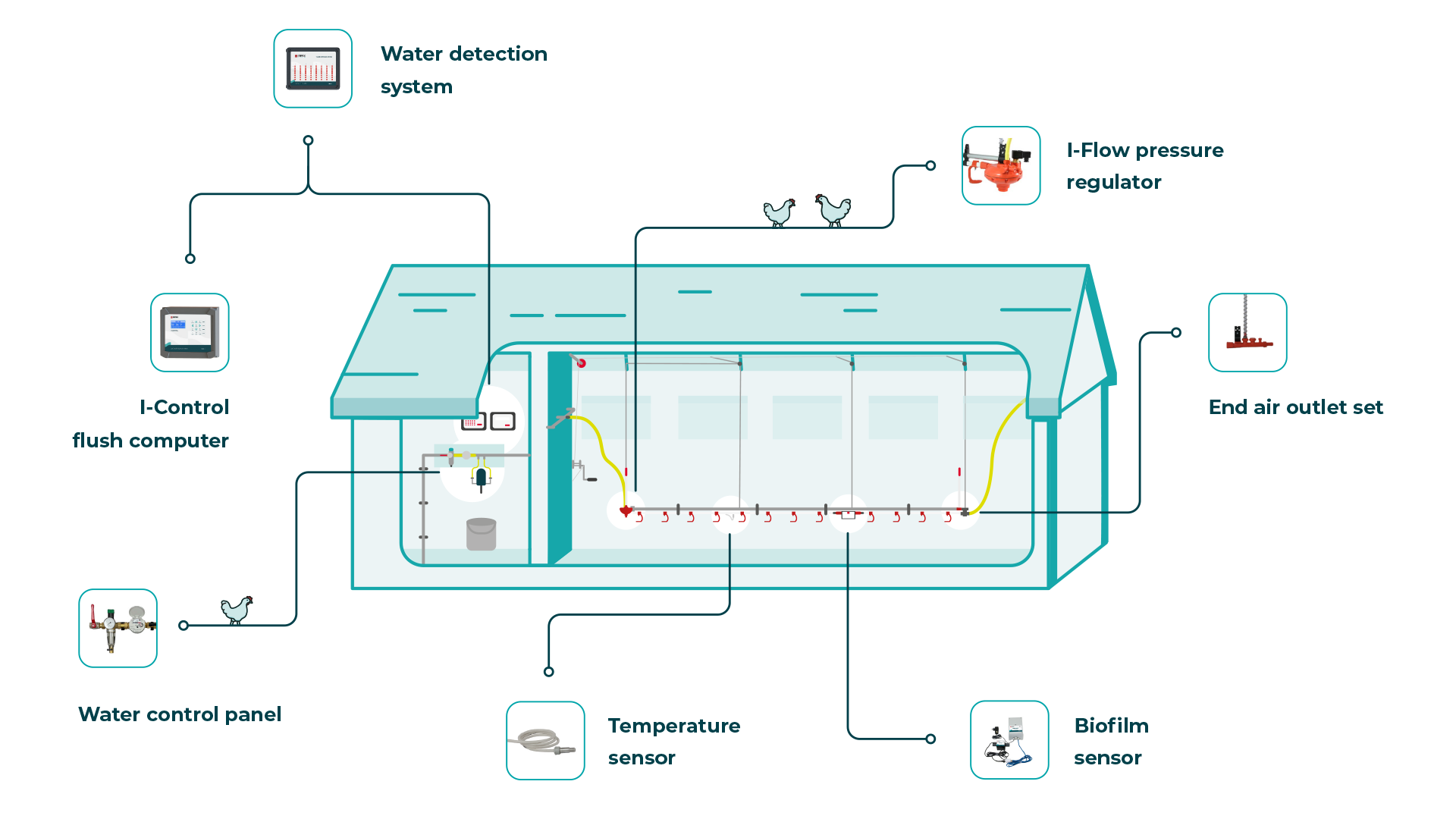
Access to tasty, fresh, and clean drinking water plays a crucial role in the growth and health of poultry. That is why it is important to flush the drinking lines regularly. With an automatic flushing system you don't have to worry about this, while you also save on water, labor, and medicine costs. And on top of that, you extend the life of your drinking water system.
Chickens are very sensitive to changes in water quality. Is the water too warm, or does it have a different taste, for example, due to pollution of the source? Then they will drink less. This has a direct effect on digestion and feed conversion, amongst other issues. A chicken that drinks less will also eat less. By automatically flushing your lines, the temperature and quality of the drinking water remain constant. This contributes towards optimum broiler growth and egg production of laying hens.
Manually flushing drinking water lines can quickly take up to half an hour in labor per house. With an automatic flushing system, you save on labor costs. An automatic flushing system also uses no more water than is necessary to flush the drinking lines. This guarantees optimal water quality without leading to water wastage.

By automatically flushing your lines, you reduce the probability of biofilm forming. A biofilm is a slime layer that adheres to the inside of the drinking line. This layer forms the perfect breeding ground for bacteria, mold, and other harmful microorganisms. This, of course, has a negative effect on the health of your animals. You can safeguard water quality with an automatic flushing system. It forms the foundation for reducing medication use and keeping your poultry free from antibiotics.
Dirt in your drinking water system can cause blockages in drinking lines or nipples. Furthermore, bacteria can produce aggressive substances such as sulfide or sulfuric acid, which can eventually damage your drinking lines. By automatically flushing drinking water systems, you prevent microbial corrosion and extend the life of your drinking water system.
The Impex I-Flush is a completely automatic flushing system for poultry drinking water lines. The I-Flush consist of a flush computer that controls the system, a pressure regulator with a flushing actuator, an end air outlet set, and a drainage hose to the main drain. Optionally, you can add biofilm sensors and temperature sensors to the I-Flush system.

In most cases, the automatic flushing of the drinking lines ensures that the drinking water is fresh, clean, and at the right temperature. However, there are always exceptions, for example, in case of stubborn contamination or too high a water supply temperature. In such cases, you do not want a sensor-controlled automatic flushing system to keep flushing the lines. That is why it is possible to set a maximum number of flushings. If that number is reached, you will receive a warning, and you can take additional measures to bring the water quality back up to standard.



 Water quality & hygiene
Water quality & hygiene  Drinking water systems
Drinking water systems  Pig drinking water solutions
Pig drinking water solutions 